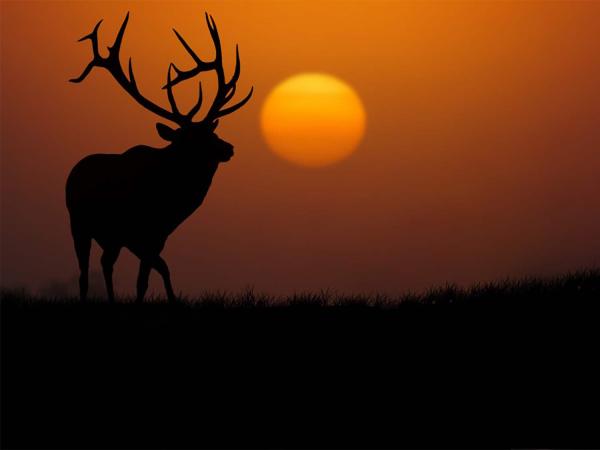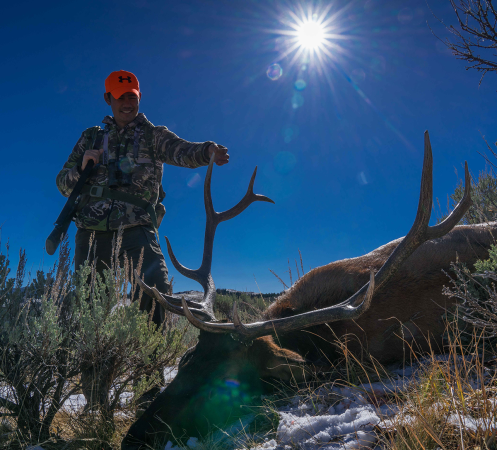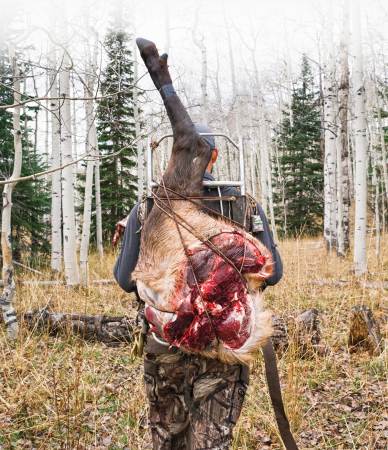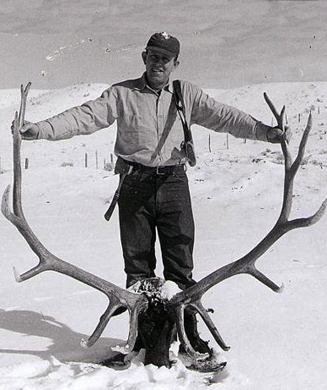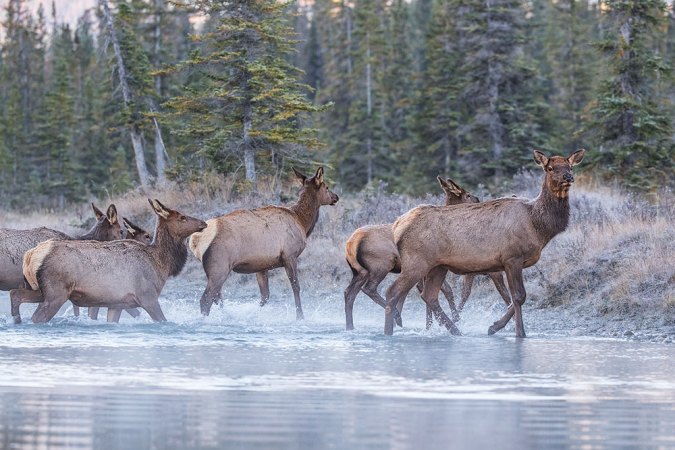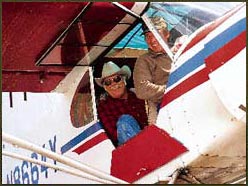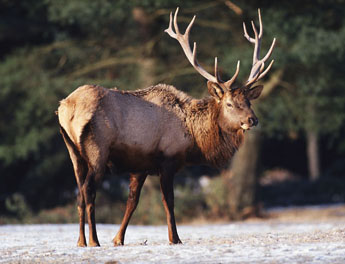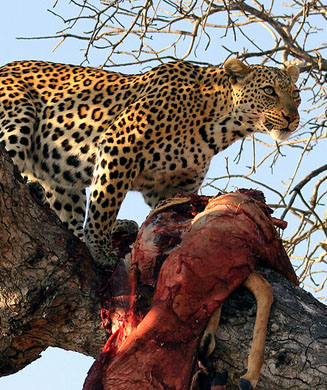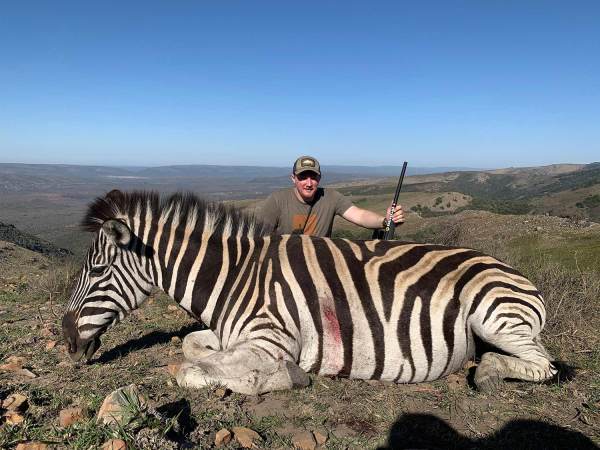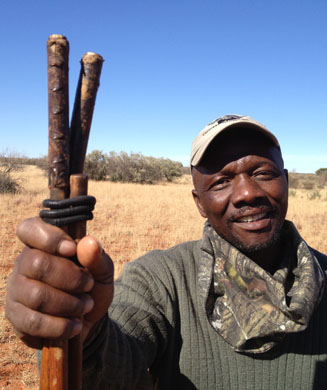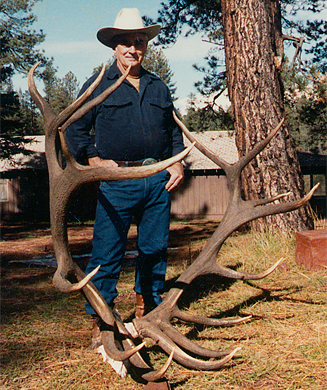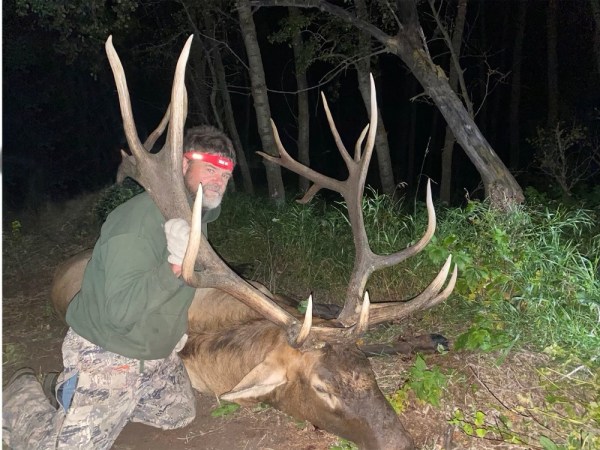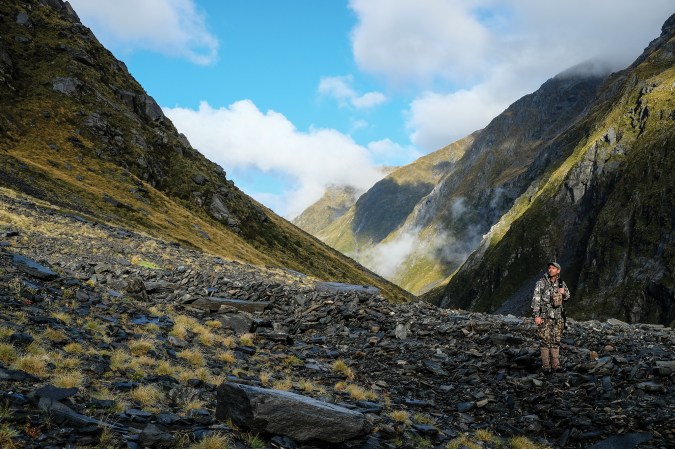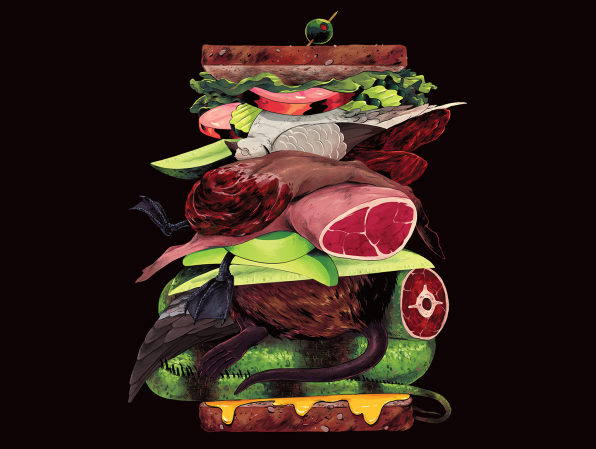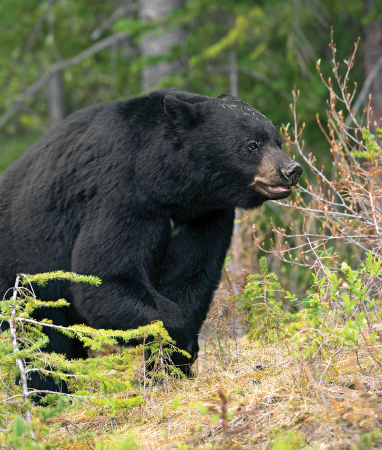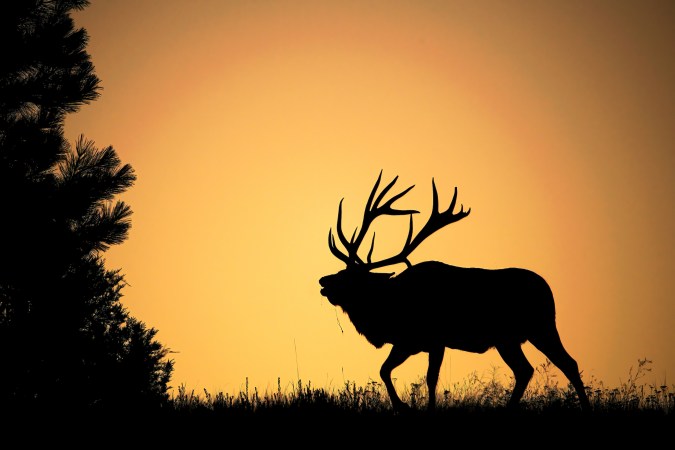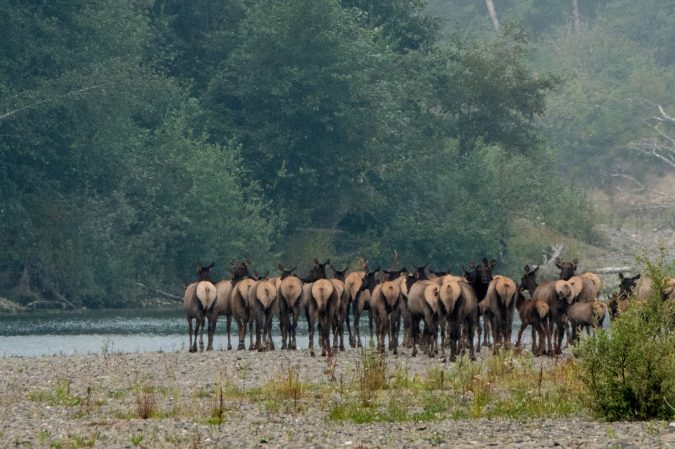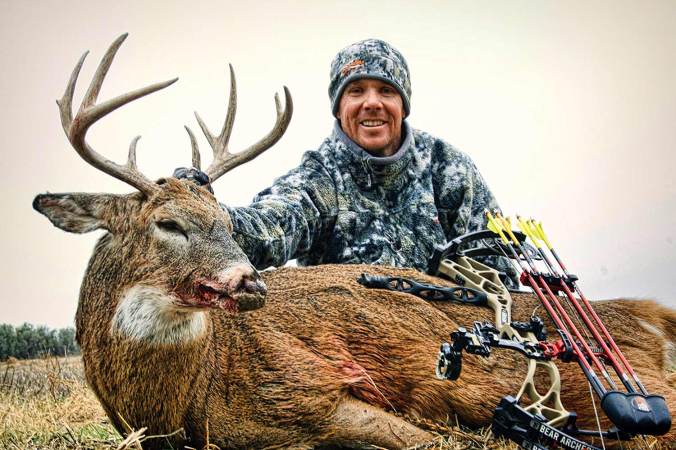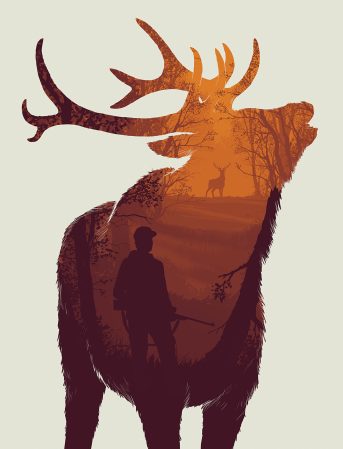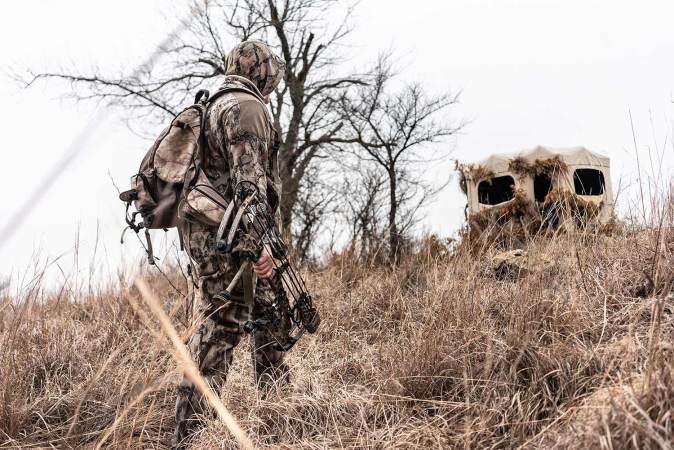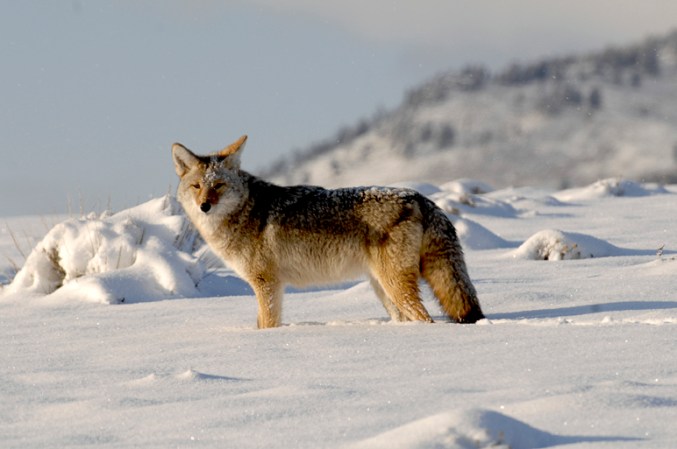The massive six-point bull came down off Montana’s Madison Range on a frigid late-November morning after an 8-inch snowfall. He lurked and roamed in a rioting mob of 600 cows, calves and lesser bull elk that was crossing a sage flat, migrating toward snow-covered hills to the west. In moments the great herd had disappeared into a ravine, leaving only the smudge of elk tracks.
Roger Young dropped his binocular to his chest and shivered in the raw wind. “I think we should try to take a closer look at that big boy, don’t you?”
“Sure,” I said skeptically. “But how are we gonna get close? There isn’t a tree for miles out there.”
Young smiled. “We’ll use the coulees for cover. Then we’ll crawl.”
An hour later, we were elbowing and kneeing our way through frosty tangles of high sage that snarled a long narrow hummock. It was one of a maze of long narrow hummocks above the Madison River. The herd milled around the big bull about 500 or 600 yards ahead.
“If we can get a couple of hundred yards closer, I think you’ll be in position for a shot,” Young said.
Before I could reply, the thunder of thousands of hooves sounded behind us. We spun around in the snow, stunned to find a second, even larger herd of elk stampeding over a hill from the north. For a moment I feared they would continue right at us and we’d be trampled. Then the lead cow veered slightly west onto the next hummock. The rest of the herd followed, chirping, mewing and whistling not 50 yards away.
“This is incredible,” I hissed to Young. “Here we are, pinned down between two enormous herds of elk.”
Young grinned. “Welcome to late-elk season on the Sun Ranch.”
Ask most elk experts to pinpoint the best time of year to hunt big bulls, and they’ll say either at the peak of the rut in September or as late as possible to catch the migration. Most Western states make such late movement hunts a limited-entry affair. Not Montana. Residents and non-residents alike can chase elk with a rifle from late October through late November, five weeks in all. If the snow flies, some of the best hunting comes Thanksgiving week. One of the best places to be during those seven days is the southern Madison River valley. And arguably the finest place to hunt in the lower valley is the 18,000-acre Sun Ranch.
For thousands of years, the snows of November have forced elk to leave the high Yellowstone plateau. Herd after herd has made the trek through the Lee Metcalfe Wilderness to the grass-rich south- and west-facing flats and foothills that make up the bulk of the Sun Ranch. Indeed, many experts consider the ranch to be one of the most crucial elk wintering ranges in the West.
As the Montana Department of Fish, Wildlife and Parks’ Region 3 wildlife manager, Kurt Alt oversees some of the greatest elk habitat on earth, including the Yellowstone, Gallatin and Madison drainages of southwestern Montana. “The Sun Ranch is one of those unique pieces of property that sits in the right location and covers enough area that it is vital either as wintering range or as a travel corridor for elk, mule deer, antelope, wolverines, grizzlies, wolves and mountain lions. There just aren’t many places left where such a diversity of wildlife exists as it does at the Sun.”
In the early 1970s, Alt says, the ranch came up for sale and Montana FWP made the public purchase of the Sun Ranch its number-one priority. Due to politics, however, the state chose to purchase another piece of property and the Sun passed again into private hands.
It changed ownership another time in the late 1980s. According to Alt, the new owner was rarely on the property and managed it poorly. He ran nearly 3,000 head of cattle on the ranch for years. Soon grass was so overgrazed that there was little left for the wintering elk. Noxious weeds were rampant. Worse yet, water was not made widely available for the cattle; as a result, the herds gathered in the ranch’s riparian zones, degrading the creek bottoms that the Madison River’s famous brown, rainbow and cutthroat trout historically have used for spawning. At the same time, the property was crisscrossed with permanent barbed-wire fences that ensnared and killed dozens of elk every winter.
Luckily for the elk, for the land and for hunters, the property came up for sale again near the turn of the century. It was bought by Roger Lang, a young high-tech entrepreneur who understood clearly how important his new property was to the migrating elk of Yellowstone Park and the lower Madison Range.
Lang has taken the unusual step of turning the Sun Ranch into a living laboratory that he hopes will yield economically and ecologically sensible approaches to preserving open spaces, habitat and wildlife in critical areas like the Madison River valley.
“I come from a different background than most ranchers and most businessmen do,” Lang admits. “My major at Stanford was ecological anthropology, the study of how the natural community and the human community interact. As such, I’m always looking for ways that humans can ensure the sustainability of nature and vice versa. I don’t believe we should count on the ping-pong world of politics to conserve these crucial lands and the wildlife that depend on them. Nor should we rely on philanthropy to conserve them, because of swings in the economy. I look for innovative ways that ongoing businesses can benefit from the land and the wildlife so they, in turn, become too economically valuable to alter.”
When Lang bought the Sun, he had no experience in the ranching business. He began talking to experts, adopting a collaborative approach and assembling a team that could best help him manage the land.
“It soon became clear that the way led through sustainable activities like environmentally sound cattle ranching, tourism and hunting,” Lang says. “People like me who come here for the first time love it and want to return again and again. As long as the land is cared for, cattle ranching will continue to be a viable business. As long as the valley maintains its pristine beauty, tourists will come and spend their dollars. As long as the elk are here, hunters will come and spend their dollars. This approach struck me as good for the land, for the wildlife, for me as a businessman and for the local community as well.”
Within a year of buying the ranch, Lang put his money where his mouth was. He protected the Sun’s riparian zones with fences to allow the creeks to rechannel themselves back into productive trout spawning grounds. The fences could be laid down in the winter so as not to harm the elk. He dug wells for the cattle far away from the streams. Then, in partnership with the Rocky Mountain Elk Foundation, he began replacing 100 miles of barbed wire with high-tensile, let-down fencing.
“It personally cost me hundreds of thousands of dollars, but it was the right thing to do,” says Lang. “When we let down the fences in early November, the Sun Ranch looks exactly like it did twenty thousand years ago and the elk can move back and forth exactly like they did twenty thousand years ago.”
Recently, Lang passed the development rights on the critical northern third of the ranch to the Nature Conservancy, ensuring that the land will always be open to the wintering elk. He talks of passing the development rights to the rest of the property in future years. Lang has also cut the number of cattle being raised on the ranch and has instituted a strict grazing rotation system. Today the grasslands so valued by the wintering elk are flourishing. And Lang’s organic cattle get top dollar in the marketplace.
Says Montana Fish and Wildlife’s Alt, “Lang is in a class by himself in trying to do what is ecologically sound for the future of the ranch and its wildlife. There are others, mostly third- and fourth-generation ranchers, who see the big picture like he does. But he’s a newcomer, an outsider buying in. What he’s doing is extremely unique.”
And successful. Under Lang’s cooperative management approach, the ranch quickly began to recover. Within two years, Lang, an avid flyfisherman, caught an 18-inch brown trout from a creek that had been a muddy mess. Then he took his efforts a step further. He became concerned about the threatened westslope cutthroat trout and built a breeding pond for the trout on his property. It provides fry for the Gibbon and the Firehole, the headwaters of the Madison River.
At the same time, Lang built Papoose Creek Lodge, which he describes as an “eco-tourist facility” that offers visitors to the lower Madison first-class accommodations and activities ranging from horseback riding to flyfishing to elk hunting.
“I’m a non-hunter, but I’m absolutely pro-hunting,” Lang says. “Hunting is part of the ecological and economic equation required to sustain the ranch in its current state.
“We admitted two hundred cow hunters for free last year. Eighty percent were successful and we were delighted that we could do our part to help members of the local community put meat in the freezer and at the same time help the state to manage the herd.
“We also donate youth bull hunts to the Rocky Mountain Elk Foundation and have been thrilled to be the ones to introduce young hunters to the sport. We charge, however, for adult hunters looking to hunt a big bull on the Sun Ranch. The fee helps us to be viable economically. The hunter, in return, gets a pretty incredible experience.”
For nearly half an hour during my bull hunt on the Sun Ranch, I was granted a close-up vision of the dynamics of two wintering herds. The massive groups of elk fed and moved across the alluvial hills above the Madison River as they have for 200 centuries. It was one of the most amazing things that’s ever happened to me afield.
When at last the stampeding herd disappeared into a cedar-choked ravine, Young and I continued our crawling stalk. We ran out of sage cover at roughly 400 yards and lay there waiting. At last, the bull stepped clear of the rest of the herd.
“Take him,” Young said.
At the shot, the bull dropped. Today his big, dark rack hangs on the wall of my office. It’s testimony to an incredible hunt, but more important, to Roger Lang’s vision of the future of land and wildlife stewardship in the ever-changing American West.
For more information on the Sun Ranch, contact Papoose Creek Lodge, 1520 Highway 287 North, Cameron, MT 59720; 888-674-3030; www.papoosecreek.com
BEYOND THE SUN
Can’t afford to hunt places like the Sun Ranch? Don’t fret: There are literally hundreds of thousands of acres of public land–wilderness and national forest–west and east of the Madison Valley floor, where many of the biggest bulls in Montana are to be found. “Some of the best hunting in southwestern Montana is not on private ranches, but on the public land above them,” says wildlife manager Kurt Alt. “The Sun is no exception.”
The public Lee Metcalfe Wilderness abuts the ranch’s western border. The wilderness itself sits within two national forests: the 45,000-acre Gallatin and the 2.1-million-acre Beaverhead. Both are known for excellent elk hunting.
Indeed, Alt estimates that 60 percent of the elk that winter on Madison Valley ranches like the Sun come not from Yellowstone Park, but from the two national forests. But be forewarned: Hunting the Lee Metcalfe Wilderness, especially the mountains that tower directly behind the Sun, is not for the faint of heart. There’s no easy access. You have to bushwhack your way for miles from the north or the south. And when you get in there, the terrain is so steep you’ll wish you had ropes and harnesses.
Still, the potential rewards are exceptional. In the four years I’ve lived in Montana, I know of at least a dozen huge bulls, including one world-class titan that scored in the 380s, that have been killed with bow or rifle in the high public forests west of the Madison River valley. Twice during archery seasons I’ve come to full draw on bugling bulls in the Gallatin Forest that would score over 330, only to have the shot never develop. But it’s opportunities like that that keep me going back.
As long as I can survive the torturous climbs, I know I’m hunting some of the best public elk terrain in the country. It’s only a matter of time before my luck changes.
For more information about public-land hunting opportunities in southwestern Montana, contact the Montana Department of Fish, Wildlife and Parks, Region 3 Headquarters, 1400 S. 19th Avenue, Bozeman, MT 59718; 406-994-5700.

